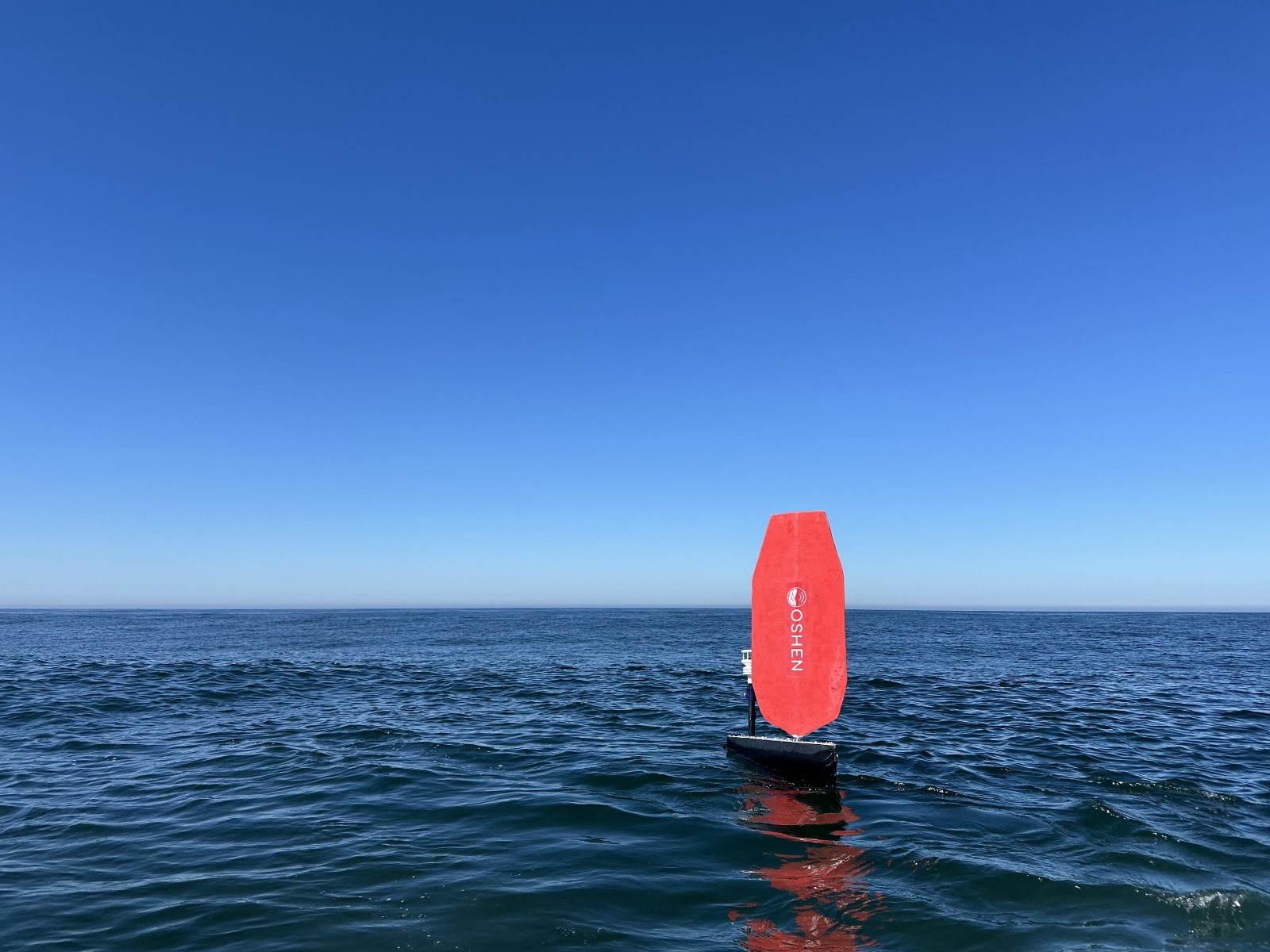Oshen awarded £2m ARIA funding to robotic monitoring of North Atlantic Climate

Oshen, a British company pioneering networked, wind-powered robots to capture unique maritime, weather and ecological data, has secured £2m from ARIA*, the R&D funding agency, to build a climate early-warning system in the North Atlantic.
Over the next two years Oshen will develop, build and deploy a fleet of low-cost autonomous craft, with a view to having 100 deployed by the end of the programme. They will operate in the Sub Polar Gyre, an area between 45° and 65° North bounded by Greenland, Iceland and Scotland. Packed with solar-powered sensors they will provide a persistent monitoring capability. The project is part of an ARIA’s ‘Forecasting Tipping Points’ climate programme, which aims to create a sustainable early warning system for climate tipping points by developing novel low-cost sensors, deployment capabilities and cutting-edge models.
The Sub-polar gyre is a vast circulatory system created by warm, salty water from the south Atlantic mixing with colder, fresher water from the north. It redistributes heat and nutrients throughout the ocean as it rotates, shaping weather patterns and marine ecosystems. This makes it a key area for climate research.
In recent years satellites have recorded record high temperatures across the wider North Atlantic region. Melting ice sheets in Greenland and West Antarctic could cause unprecedented sea level rise, while a weakening of the Atlantic thermohaline circulation could shift the atmospheric jet stream, causing regional cooling in Europe and North America with substantial impacts on agriculture.
It is also a punishing environment in which to operate scientific equipment. Oshen’s devices – known as ‘C-Stars – act like a constellation of seaborne satellites, using navigation software developed in-house, to maintain position. If blown off course, C-Stars sail themselves back to their starting point. In recent trials, a prototype vessel survived near gale-force conditions and eight metre waves, while reliably transmitting data.
⚙ The 1m long, 25kg boats are fully independent but work together to create an adaptable, dynamic network. For the ARIA mission they will measure variables such as sea surface and air temperature, wave height, salinity, wind speed and direction, humidity, chlorophyll and fish and marine mammal abundance.
C-Stars are constructed from everyday materials and utilise off-the-shelf components. This keeps costs low and reliability high. Existing maritime data-gathering technologies tend to be expensive and vulnerable: data-buoys, for example, cost upwards of £300,000 each [per year] but are easily swept away by storms. Getting traditional sensors into position also typically requires specialist crews and support vessels. Being small, light and robust, a constellation of 10 C-Stars can easily be launched from a small fishing boat. They will then sail themselves into position and, at the end of the mission, make their way back to a convenient pick-up point.
? Oshen Co-founder Anahita Laverack said, “We want to do for the sea what smallsats did for space: revolutionise access by providing a reliable, low-cost platform anyone can use – from scientific researchers to clean energy providers to weather forecasters. The ARIA funding enables us to refine our design and scale for volume manufacture – which will help reduce cost per vessel even further. We will also be developing advanced navigation and path-planning algorithms for network-level coordination. We will then head to the North Atlantic to demonstrate how a fleet – or constellation – of C-Stars can provide a unique and persistent monitoring capability, even in the harshest environments.”
- Subject to final contract negotiation.
?? Source: Oshen
See also related
Countries
Applications
Ship Types
Recent updates
ROC + DOCK project demonstrates future of resident USV operations
Research project to teach MASS operate with critical navigation data
ORLEN acquires Exail Drix H-8 USV
TideWise launches two new USVs
Zeabuz launches Dual-Use Autonomy Platform on Damen's ZeaFalcon
BlackSea Technologies introduces Modular Attack Surface Craft USV Family
